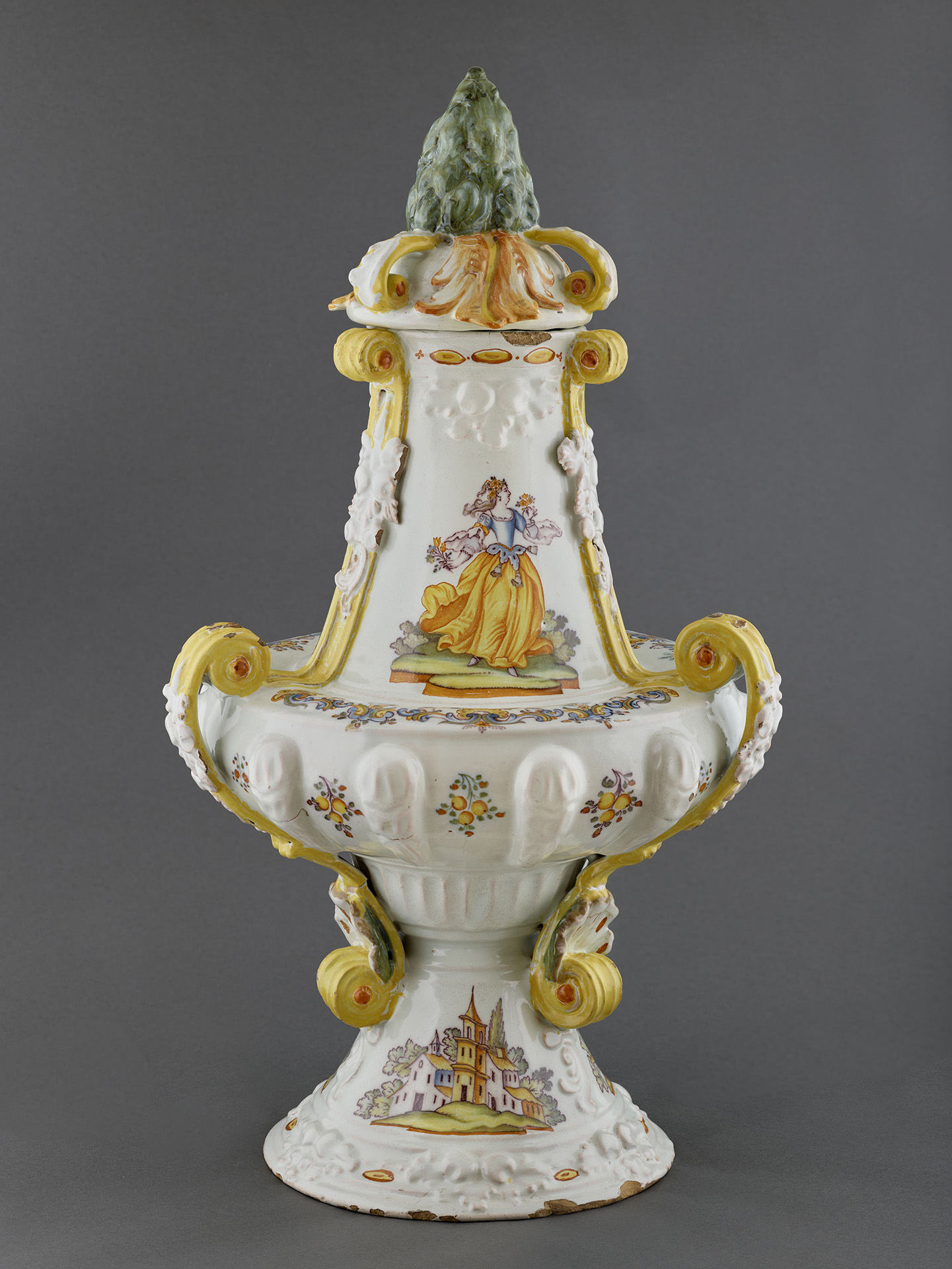
Talavera de la Reina
Ornamental jug with lid
Alcora influence series (1760-1770)
WORK INFORMATION
Ceramic, polychrome earthenware, height: 60.5 cm
The potteries of Talavera de la Reina began to flourish from the 16th century onwards, when they received a large number of commissions to make tiles to decorate the wainscots and floors of houses and palaces. The polychrome figurative compositions reproduced designs related to Italian Renaissance polychrome productions which, because of their novelty, had rapidly flooded the European market. At the same time, tableware, writing implements and apothecary jars were produced, the ornamentation of which evolved with the fashions of the time. As a result of the prestige that Talavera wares acquired in the 16th and 17th centuries, imitations of the most iconic Talavera series were made in the potteries of Aragon and Seville.
Throughout the 18th century, Talavera potters produced the most ambitious works: large-format ornamental jugs and ewers decorated with hunting and allegorical scenes inspired by the engravings of the Flemish Stradanus (1523-1605) and the Italian Antonio Tempesta (1555-1630), as well as blue chiaroscuro tableware, inspired by Italian productions from Liguria. One of the most outstanding artists of the Alcora manufactory, José Causada (active between 1743 and 1750), decided to leave Alcora in 1750 and settle in Talavera de la Reina, where he worked for a few years before returning to the Castellón manufactory. During this short period, Causada designed decorations inspired by those of Alcora, giving rise to the Alcora influence series. The Talavera artists, stimulated by the elegant refinement of Alcora ceramics, improved the quality of their clays, models and decorations.
The lid and mouth of this ornamental jug have a slightly undulating rim. The piece features relief appliqués and has a trunco-conical neck, scrolled handles and a goblet-shaped body. Its unique type, of which no other is known, indicates it may have been a commission. The jug’s neck is decorated with female figures in period costume on a simulated plot of ground. The receptacle alternates groups of three fruits and small vegetal designs with pine-cone-shaped motifs in relief. The foot displays clusters of houses and buildings, very similar to those found on the Alcora red-striped series. The lid has palms in relief, scrolls and a knob in the shape of a pine cone.

